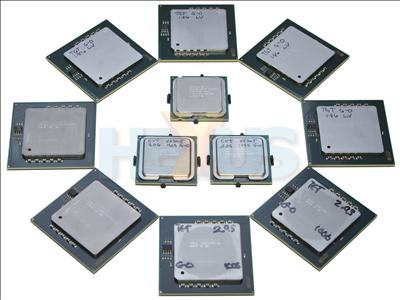Introduction

Core Microarchitecture has been around over a year but it's only now that Intel is introducing a four-socket solution. In our first look at current and upcoming server propositions for the enterprise market, we check out the fastest Tigerton Xeon CPU, the X7350, and the one with the lowest power draw, the L7345, to try to see if these strong CPU cores can overcome the disadvantage of an ageing system-interconnect design.
Since the introduction of the Woodcrest server CPU over a year ago, Intel has been gradually clearing away the old NetBurst cob-webs and transitioning its entire range across to the highly-rated Core Microarchitecture.
Yet in August of last year, over a month after the launch of Woodcrest, a new NetBurst product snuck out of Santa Clara. Was this a run-out, low-end, budget processor - designed to help clear stock? No, the new processor was Tulsa, a dual-core 65nm behemoth, with 16MB of L3 cache and designed for systems with four or more sockets. It measured a phenomenal 435 mm² when, by comparison, Intel's 65nm quad-core parts are made up from two 143mm² dice, giving a total size of 286mm².
The launch of Intel's Clovertown Xeons for two-socket systems only helped to confuse matters. Businesses could buy an eight-core, two-socket system based on the new, more efficient Core Microarchitecture or they could opt for a considerably more expensive eight-core, four-socket system with higher power consumption and, in many cases, lower performance.
Finally, however, Intel is removing the final remnants of NetBurst with the introduction of the Caneland platform and its Xeon 7200-series and 7300-series dual-core and quad-core CPUs - also known as Tigerton. What we don't find replaced is the use of the aging front-side bus - Intel's rival to Hyper-Transport, CSI, is still some way off.
So with this limitation still in place, can Tigerton truly shine across a range of multi-threaded workloads - or is this ageing interconnect a limiting factor in reaching its full potential? We've gathered together over 112GHz (and 900W) of CPU cores to find out.









